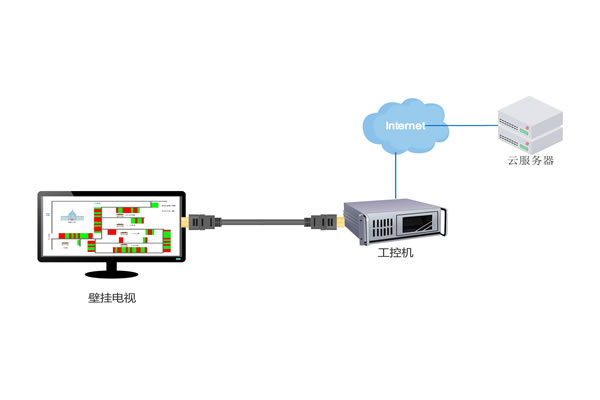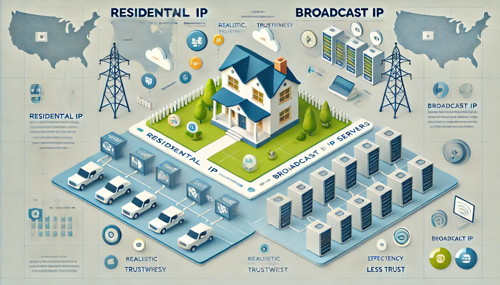With the increasing frequency of cyber attacks, especially DDoS (Distributed Denial of Service) attacks, server security has become one of the most concerned issues for enterprises and individual users. American high-defense servers are widely favored for their excellent protection capabilities. This article will discuss the technology that cannot kill the US high-defense server and analyze its security mechanism and protection strategies.
The basic concept of high defense server
A high defense server, as the name implies, is a server with high defense capabilities. Its main function is to resist various cyber attacks, protect data security and service stability. U.S. high defense servers are usually equipped with advanced hardware and software that can quickly identify and isolate malicious traffic when traffic attacks occur, ensuring that legitimate users’ access is not affected. By using a variety of technical means, these servers can effectively prevent service interruptions and data breaches.
Current Situation and Dangers of DDoS Attack
DDoS attack refers to using a large number of computers to send requests to the target server at the same time, causing the server to be overloaded and ultimately causing the service to be unavailable. In recent years, the scale and technology of DDoS attacks have been increasing, and attackers often use botnets to launch attacks. Such attacks not only lead to business disruption, but can also cause serious economic losses and reputational damage. Therefore, establishing a strong protection mechanism is the top priority of every online business.
Protection technology of American high-defense servers
The US high-defense server adopts a series of advanced protection technologies to deal with complex and changeable cyber attacks. First of all, flow cleaning technology is one of its core. By analyzing incoming data traffic, identifying and filtering out malicious traffic, ensuring that normal data can reach the target server smoothly. In addition, load balancing technology is also widely used, which can evenly distribute traffic to multiple servers, thereby reducing the pressure on a single server and improving the overall pressure resistance.
Intelligent identification and protection mechanism
Intelligent identification technology is another important protection method for American high-defense servers. Through machine learning and artificial intelligence algorithms, these servers can monitor traffic changes in real time and quickly identify abnormal behaviors. For example, when an IP is found to send requests frequently, the system will automatically block the IP to prevent it from continuing to launch an attack. This intelligent protection mechanism greatly improves the security of the server and reduces the necessity of manual intervention.
Redundant backup and disaster recovery mechanism
In order to further enhance the stability of the server, US high-defense servers are usually equipped with redundant backup and disaster recovery mechanisms. When the primary server fails, the backup server can quickly take over the service to ensure business continuity. At the same time, real-time backup of data can also avoid data loss caused by attacks. This multi-guarantee mechanism ensures that enterprises can quickly restore services when facing various risks.
Legal and compliance guarantees
The operation of US high-defense servers also needs to comply with relevant laws and compliance requirements. Many service providers consider regulations such as Data Protection Law, Cybersecurity Law and other regulations when designing protection policies. This is not only to protect users’ personal information, but also to reduce potential legal risks. Such compliance guarantees enhance users' sense of trust in high-defense servers.
Things to note when users choose high defense servers
When choosing a high-defense server, users should consider multiple factors, including the service provider's technical strength, customer support, price, and whether to provide customized protection solutions. Understanding the protection mechanism and technical background of service providers will help users make wise choices. In addition, users should also pay attention to the reputation and user reviews of the service provider to ensure that they choose a trusted service provider.
Future development trends
With the changes in the network security situation, the technology of high-defense servers will continue to evolve in the future. The rise of cloud computing and edge computing will bring new opportunities to the construction of high-defense servers. By distributing protection capabilities at the edge of the network, it is possible to respond to cyber attacks more quickly. In addition, the application of artificial intelligence and big data analysis will make high-defense servers more intelligent and automated in attack recognition and response.
Summary and suggestions
Behind the technology that cannot kill the US high-defense server , there are rich security mechanisms and protection strategies. With the continuous evolution of cyber threats, users should pay attention to their technical capabilities and compliance guarantees when choosing high-defense servers. It is recommended that users fully understand their protection technology and customer service when choosing a service provider to ensure reliable security. By taking effective protective measures, users can protect their data and services when facing cyber attacks.

- Latest articles
- U.s. High Defense Server Xiaoai Function Analysis And Usage Guide
- Advantages And Practical Applications Of Hong Kong Positioning Server
- Practical Tips On How To Buy Thai Cloud Servers At Low Prices
- The Best Way To Get A Free Ip Address For A Taiwanese Server
- Explore The Best Usage Scenarios Of Thailand Dynamic Dial-up Vps
- Learn The Truth About Whether Server Rent In Thailand Is Expensive
- Analysis Of Diverse Application Scenarios Of Hong Kong Vps
- Comparison And Recommendation Of The Cheapest Cloud Servers In Vietnam
- Best Options And Suggestions For Renting A Server Outside Malaysia
- Stability Evaluation And User Feedback Of Shatin Computer Room In Hong Kong
- Popular tags
-
Do You Know How Much Is The Cost Of Server Hosting In The United States For One Year?
Learn more about server hosting fees in the United States, including factors that affect price and different types of hosting options. -
Market Demand And Development Trends Of High-defense Servers In U.s. Enterprises
this article discusses the market demand and development trends of high-defense servers in american enterprises, and analyzes the impact of the network security environment on enterprises and its future development direction. -
Analysis Of The Role And Application Scenarios Of The American Station Group Server
analyze the role and application scenarios of the american site group server, and explore its importance and scope of application in seo optimization.


